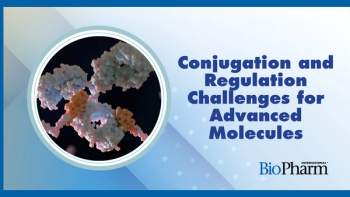
- BioPharm International-10-01-2012
- Volume 25
- Issue 10
Moisture Matters in Lyophilized Drug Product
Using an alternate moisture-generation method may provide more accurate data for regulatory submissions.
Lyophilization, or freeze-drying, is a process by which a drug formulation is first frozen and then the ice is removed by sublimation under a vacuum. For a lyophilized drug product, the residual moisture specification is a crucial component of the data package for regulatory filing. A defined acceptable range of water content also provides flexibility in the manufacturing process. Such data are usually generated by assessing product stability at various moisture levels.
Leu-Fen Lin, PhD
The moisture content of the product vial in stability studies is usually inferred from that determined for sister vials. Such an approach raises two concerns. First, the moisture content of the vial in the stability study potentially may not be identical to the reference sister vials due to vial-to-vial variability, and therefore, may be imprecise for resolving stability issues. Second, moisture levels in the product being analyzed are usually generated by sorption of water (via exposure or equilibration) onto a previously highly dried sample, whereas the moisture in an actual product results from incomplete desorption (during freeze-drying). Further data must be obtained to justify that each individual product stability is the same no matter which method is used to introduce moisture, due to the unique properties of each product being evaluated.
Richard Bunnell, PhD
PROPOSED APPROACH FOR MOISTURE GENERATION WHEN FREEZE-DRYING
The approach proposed here addresses both concerns by generating moisture in situ from freeze-drying and by ascertaining the actual moisture content of the vials being analyzed for stability.
Conventional method (ex-situ)
In a conventional method of generating residual moisture (i.e., ex-situ), samples are placed in a humidity chamber at a set temperature and a set relative humidity (RH) (e.g., 40 °C/60% RH) to allow subject materials to adsorb various amounts of moisture (1). An alternative is to pre-equilibrate samples at discrete RH values (2). Weighed samples in open vials are placed in desiccators with CaSO4 (Drierite) or saturated salt solutions to provide various RH at 25 °C (LiCl, 11%; CH3CO2K, 23%; MgCl2, 32%; K2CO3, 43%; Mg(NO3)2, 51%; NaCl, 75%; and K2CrO4, 86%).
Proposed method (in situ)
Two runs of lyocycle (of identical set-up) are proposed. Twelve 20-mL vials are filled with a fixed volume of a protein drug formulation so that the final lyophilized product (the cake) weighs approximately 0.4–0.6 g. Four vials are placed on each of the three shelves in the lyophilizer. Lyophilization is performed by freezing the sample and subsequently subliming ice from the frozen content at a temperature suitable for primary (10 ) drying. Primary drying is continued until the Pirani pressure readout deceases to the pressure level (e.g., 100 mTorr) of the capacitance manometer (CM) when the secondary (20 ) drying begins. Vials on each shelf are stoppered sequentially at approximately 1–3 h intervals between the end of 10 drying and the beginning of 20 drying.
Table I: Moisture content of vials in lyophilizer (capacitance manometer set at 100 mTorr).
Each cake is split into 6 pre-weighed 5-mL vials in a glove bag where a low RH (< 2%) is maintained by flushing with dry nitrogen. Cake weight is recorded. One vial from each cake is analyzed for moisture content by Karl Fisher (KF) titrator connected to a KF Thermoprep (oven, Metrohm) equipped with an adaptor for the 5-mL vials. An example of the analysis for a protein drug product is shown in Table I.
Table II: Vials from Table I selected for stability study.
Aside from the expected shelf-to-shelf differences in moisture content (since each shelf was stoppered at different times), there was also substantial vial-to-vial variability among vials on the same shelf, mainly because those vials were stoppered when sublimation was still in dynamic process and the system was not in equilibrium. These data guide the second lyocycle run (with additional 12 drug formulation-filled vials) in which one can better gauge when to stopper the vials to obtain cakes complementary to those from the first run so that the full range of 0.1–7.0% moisture levels can be obtained (see Table I).
From the two lyocycle runs, eight groups of the 5-mL vials, each contains ~1/6 of the cake with known moisture contents (italicized in Tables I and II), are selected for stability studies. One vial from each group is the t=0 sample, while the remaining 4 vials from each are incubated at accelerated temperatures for predetermined time periods (e.g., 50 °C for 2 weeks and 4 weeks; 40 °C for 3 months; and 25 °C for 24 months) and analyzed by the stability-indicating assay upon reconstitution.
Figure 1: Moisture content versus stability via SE-HPLC.
Stability data using the above approach with two different protein drug products are shown in Figure 1. The major degradation route for both proteins upon lyophilization was aggregation; therefore, protein stability was assessed by size exclusion high-performance liquid chromatography (SE-HPLC) to measure the recovery of intact native protein (% native). Figure 1A demonstrates that all eight t=0 samples (Table II) with 0.3–6.2% moisture content had identical % native protein indicating the residual moisture level had no impact on the in-process stability. However, the 50 °C and 40 °C storage stability decreased when the residual moisture was ≥ 3.6%. Results in Figure 1a suggest that the moisture specification can be set at 3% for this protein drug product.
Stability data using the same approach with a second protein drug product is shown in Figure 1b. The results suggested a moisture specification of 2.7% is appropriate for this drug product.
DISCUSSION
A few technical points are worth mentioning. First, for easier transfer of the divided cake/powder in the glove bag, vials with an opening of 20 mm (for a 5-mL vial or a 6-mL oven vial from Metrohm) instead of 13 mm (for 2- or 3-mL vials) are recommended.
Second, before performing the actual experiment, one should test the system suitability by selecting at least two cakes with high and low moisture levels (at > 3% and < 1%, respectively) and perform moisture analysis on all six vials from each cake. The percentage of moisture should be identical (or with very low relative standard deviation) for all the replicates.
Third, during a real experiment, one can also include vials/samples with very close moisture content for an accelerated stability study. An observation that the accelerated stabilities are extremely close for samples with similar moisture levels will reinforce the confidence that one is on the right track.
Finally, it is possible that, with extensive product knowledge and process understanding, one can, in a single lyocycle run, achieve cakes with all the desirable spread of moisture contents (between 0.1–7.0%). Therefore, it is not always necessary to perform two lyocycle runs when using the proposed approach.
There is no need for large amounts of product or sophisticated equipment. In addition, generating residual moisture in situ offers a more realistic simulation of an actual freeze-drying run in drug production. Furthermore, the residual moisture of each product vial incubated at accelerated temperatures for predetermined time periods (i.e., in storage stability study) can be measured directly and therefore can be considered more accurate than that inferred from sister vials. Thus, ambiguity in stability studies can be reduced.
CONCLUSION
When manufacturing lyophilized drug product, the conventional wisdom is to aim for no more than 1% residual moisture. Based on the approach outlined here, the moisture specification for two different protein drug products was 3.0% and 2.7%, respectively, thereby providing for a higher margin than the conventional 1% residual moisture for lyophilized drug products. Information generated using this approach can help to strengthen one's data package to support specifications for regulatory filings and manufacturing ranges.
Leu-Fen Lin, PhD, is a senior manager, Formulation Development, and Richard Bunnell, PhD, is general manager, both at SGS Life Science Services, 616 Heathrow Drive, Lincolnshire, IL 60069, tel. 847.821.8900,
REFERENCES
1. E.D. Breen et al., Pharm. Res. 18, 1345–1353 (2001).
2. N.K. Jain and I. Roy, Pharm. Res. 28, 626–639 (2011).
Articles in this issue
about 13 years ago
BioPharm International, October 2012 Issue (PDF)about 13 years ago
India Enforces Stricter Patent Lawsabout 13 years ago
A Manufacturing-Capacity Sharing Modelabout 13 years ago
FDA and the Importance of Confidentialityabout 13 years ago
New Era for Generic Drugsabout 13 years ago
Discovery Pipeline: Nanoparticles for Targeted Deliveryabout 13 years ago
Considerations in Vaccine Packaging and Delivery Systemsabout 13 years ago
Sizing the Market for Contract Manufacturingabout 13 years ago
Bringing Innovation to Neglected Disease R&DNewsletter
Stay at the forefront of biopharmaceutical innovation—subscribe to BioPharm International for expert insights on drug development, manufacturing, compliance, and more.




